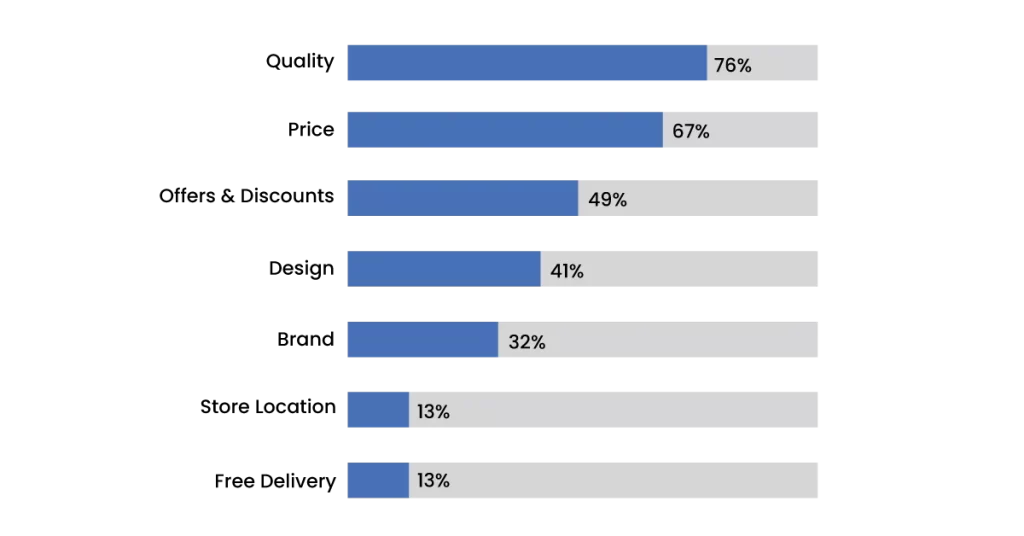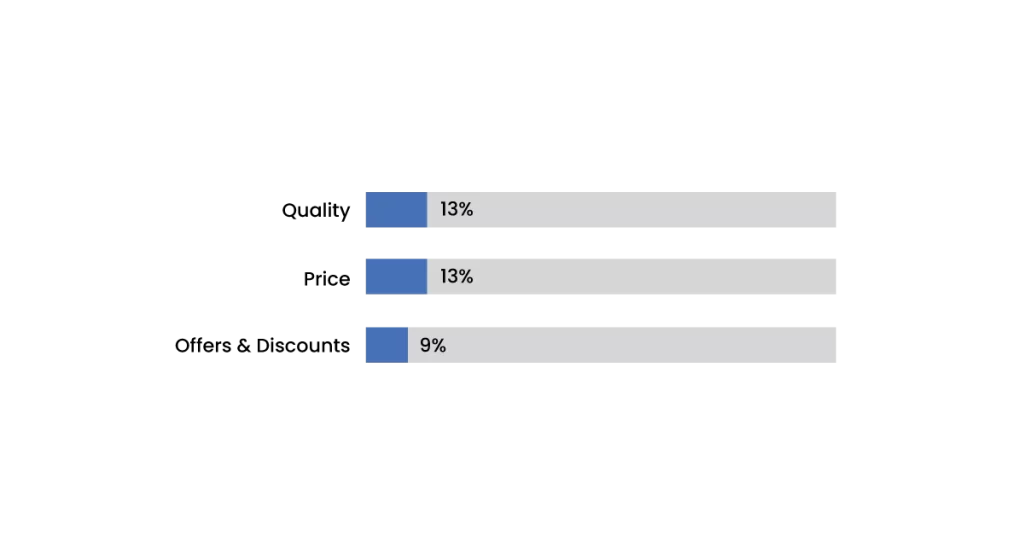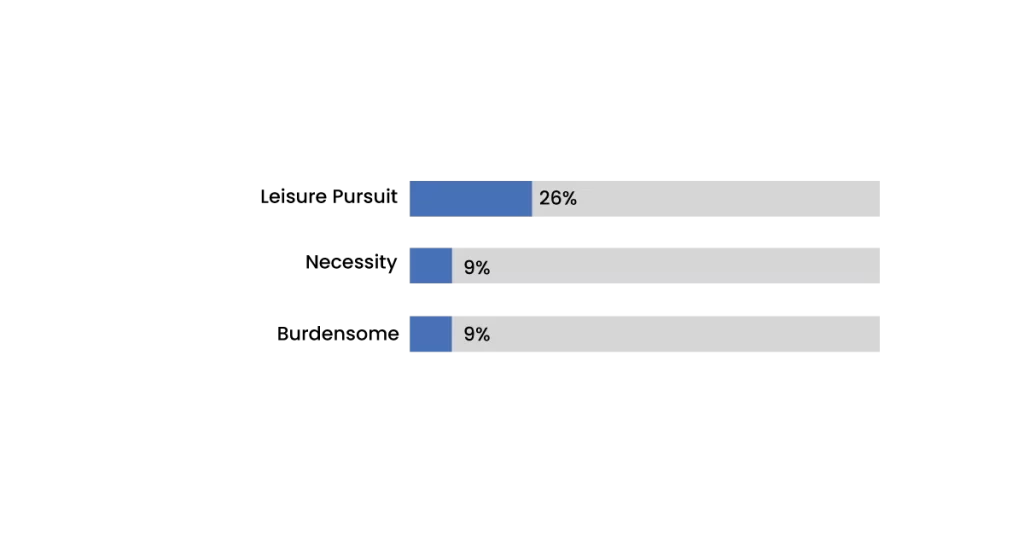The insights from Borderless Access’s recent study on consumer behavior in the Kingdom of Saudi Arabia (KSA) offer a nuanced view of the factors that drive purchasing decisions in developing economies. Contrary to the common assumption that price is paramount, the study found that a majority of KSA consumers (76%) prioritize the quality of clothes, footwear, and accessories over cost. Nevertheless, price remains a significant consideration for 67% of consumers.
The research, aimed at deciphering the shopping preferences in the KSA market, indicates that while quality and price hold the reins, other factors like offers and discounts (49%), design (41%), and brand loyalty (32%) also play influential roles in consumer choices.

Trends, Free Delivery And Store Location Are Not Crucial Deciding Factors
It is noteworthy that less conventional factors such as trends, free delivery, and store location were not as influential, with only 9% of consumers swayed by the latest trends and a mere 13% enticed by free delivery options.

Shopping—Hobby Or Burden?
The study also shed light on the consumer’s relationship with shopping as an activity; 26% engage with it as a leisure pursuit, 16% approach it as a necessity, and 9% find it burdensome, only indulging when absolutely essential.

Shopping Budget
In terms of spending habits, the monthly budget for a significant number of consumers (30%) ranges from SAR 91 to SAR 225, while another 30% allocate SAR 226 to SAR 453 for their monthly apparel and accessory needs. There is a marginal 2% who spend up to SAR 45 monthly.
Methodology: This analysis is derived from a methodologically robust survey conducted in September 2023, canvassing a demographically balanced sample of adults aged 18 to 45 from five key regions in KSA—Riyadh, Jeddah, Mecca/Medina, Dammam, and other areas—ensuring a gender parity among participants. This in-depth understanding of the KSA consumer market serves as a strategic compass for retailers and brands, highlighting the importance of balancing quality and price, while also considering the nuanced preferences that influence consumer purchasing decisions.







